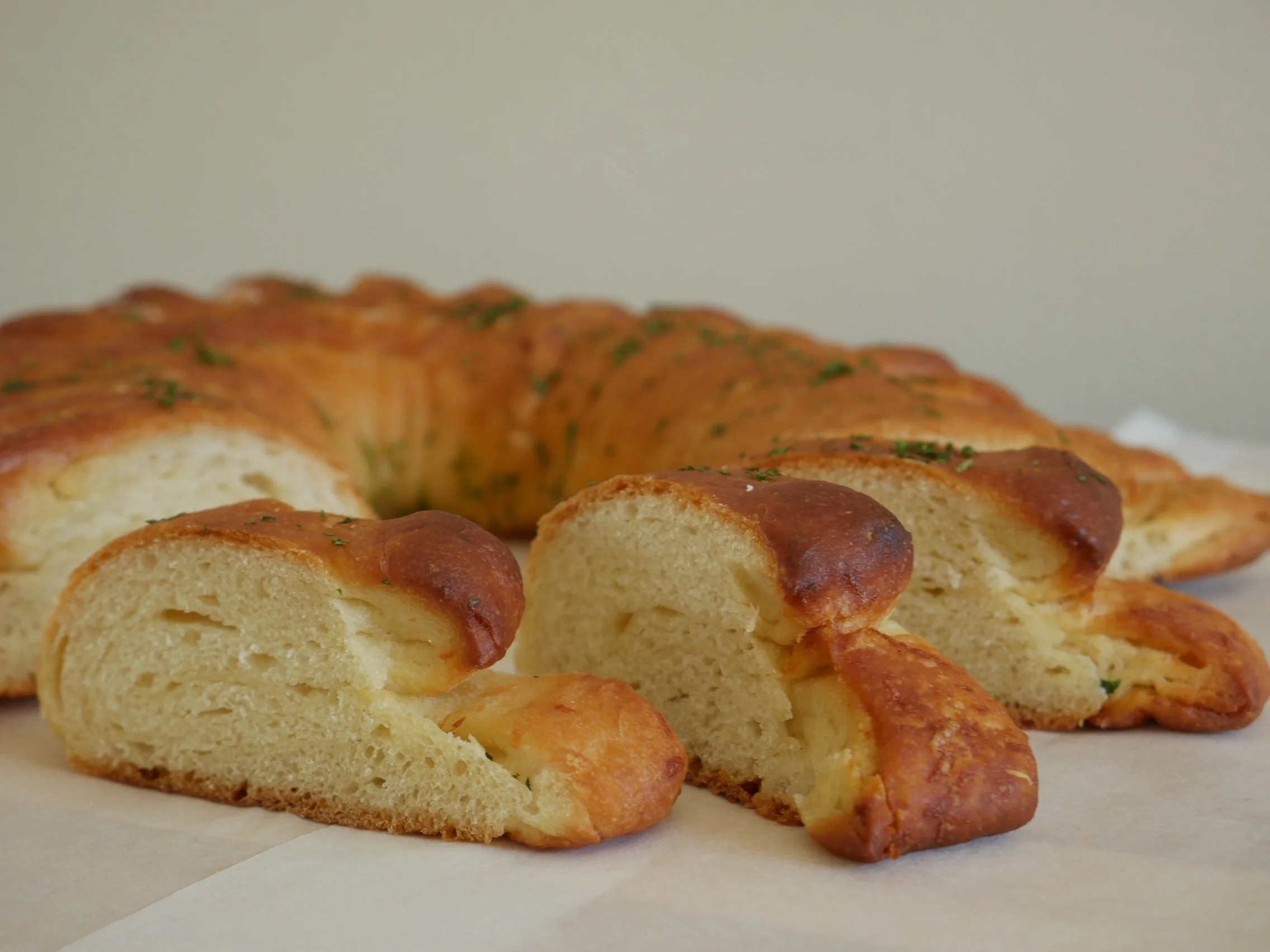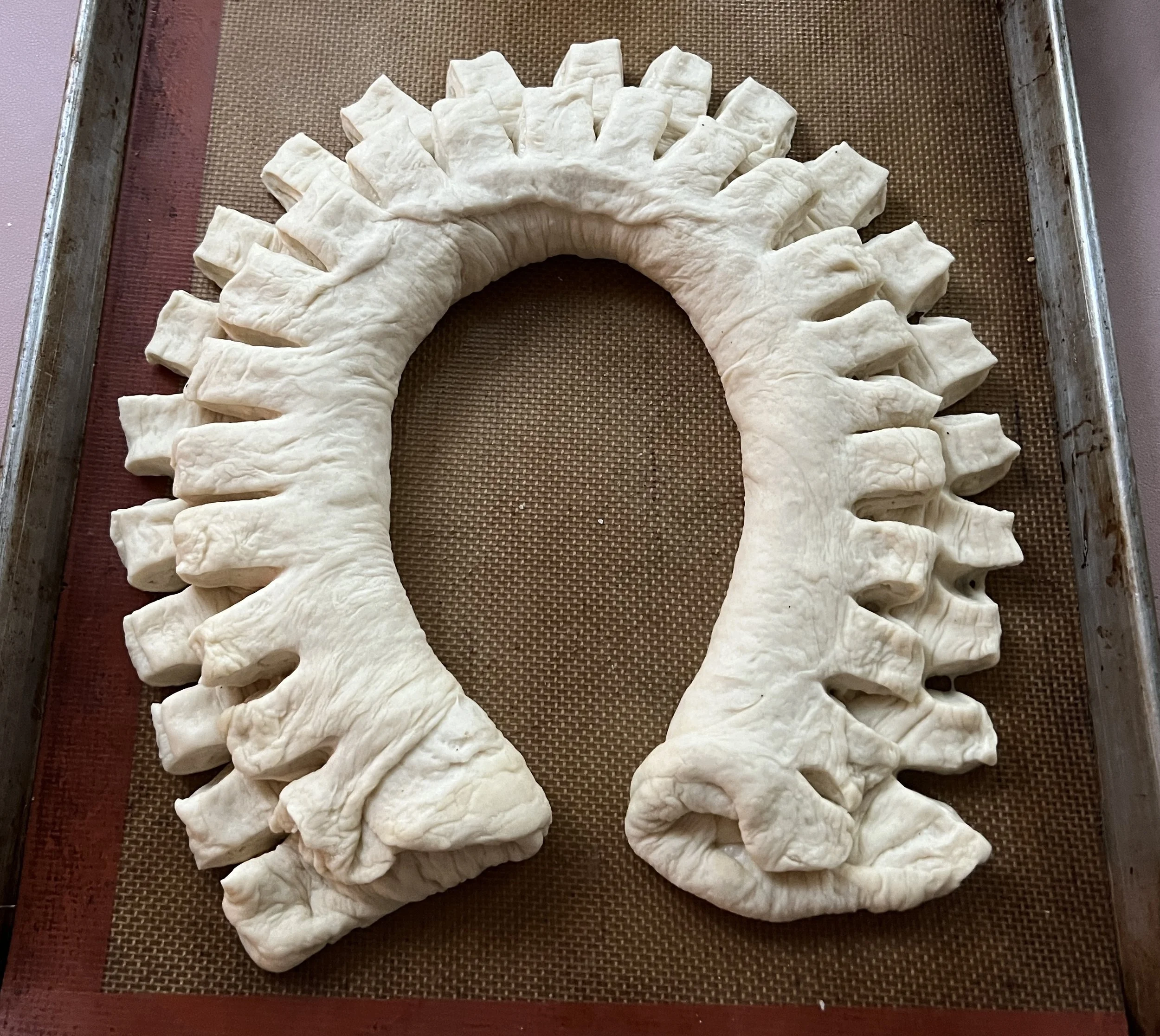Hello Bakers,
On Saturday’s DoughDr Live - I demoed how to build flakiness into biscuits. This is first in a series called “Learning to Laminate”. In this series we will learn how to build layers into our doughs that we want to be flaky.
In baking, flakiness is a good thing.
Here is the link to Saturday’s show and the laminating demo: https://youtu.be/Yiufh5DtUko
BUTTERMILK BISCUITS
Yield: 8 to 10, depending on size of cutter
Equipment
Biscuit Mise en Place - and ready to bake on the left
Half sheet pan lined with parchment paper
Large mixing bowl
Bowl scraper
Pastry blender (optional)
Sifter
Rolling pin
Biscuit cutters
Bench scraper or chef’s knife
Pastry brush
Ingredients
2 cups (9 ounces/255 g) unbleached all-purpose flour
2 teaspoons baking powder
1⁄2 teaspoon baking soda
1 tablespoon sugar
3⁄4 teaspoon salt
1 stick (4 ounces/113 g) unsalted butter, cubed and chilled
3⁄4 cup (6 ounces/170 g) buttermilk or milk with 2 teaspoons lemon juice or apple cider vinegar added to it, store-bought or homemade, plus extra for brushing
1. Line half sheet tray with parchment paper.
2. Preheat the oven to 400 F (190 C). For convection 375F (180 C).
3. Sift together dry ingredients in a large bowl.
4. Cut in the butter with a bowl scraper or pastry blender until the butter looks like small flakes.
5. Add the buttermilk or acidulated milk over the top of the dry ingredients, using the bowl scraper to push and fold the liquid into the flour.
6. If it looks dry add a little more buttermilk or milk (two tablespoons at a time) around the edge of the bowl.
7. Continue to mix and fold until all the dry ingredients are incorporated and there is no dry residue on the bottom of the bowl.
8. Turn the dough out onto a very lightly floured surface and fold briefly until smooth.
To laminate the dough roll the dough out into a rectangle approximately 6” X 12” and then fold into thirds, give the dough a quarter turn and roll out again and fold. Working quickly repeat one more time. Then roll the dough out into a 6”X 6” square and cut the biscuits into 2” x 2” squares. The dough can also be rolled out 5/8” thick and cut with a cutter.
11. Place biscuits on a baking tray, 1 inch (2.5 cm) apart and chill in the refrigerator for 20-30 minutes.
12. Brush tops with buttermilk.
13. Place biscuits in oven. Turn the oven temperature down to 375. Bake the biscuits. Start checking in 15 minutes. They should be an overall golden brown. Break one open to check for doneness. They may take a few more minutes.
Check for doneness by picking one up - it should feel light and be golden brown in color.
14. Usually, more baking time is needed, reduce the oven temperature by 25 F (15 C) and continue to bake, checking in 5-7 minute intervals.
15. Cool for a few minutes on a rack. Serve warm.
Note: Leftover biscuits freeze well. Wrap and hold for up to one month.
Thaw and refresh in a 350 F (180 C) oven 5-7 minutes before serving.
Finished Flakiness










